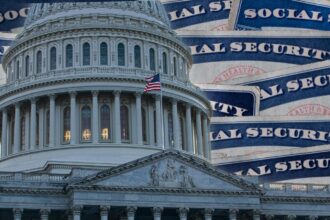Since the Great Resignation in 2021 when employees across industries quit their jobs in large numbers, private sector employers have begun revisiting their benefit offerings to align with current employee preferences. As cited in a recent JP Morgan Asset Management report, “Pension Defrost: Is it Time to reopen DB pension plans- or at least stop closing and freezing them?,” 40 percent of private sector employees who separated from their employer during the Great Resignation cited inadequate benefit packages as a motivating factor in their decision. Additionally, 85 percent of younger workers said that receiving a fixed, lifetime, monthly benefit at retirement is a priority.
Corporate retirement plan sponsors reevaluating their benefit packages have a variety of retirement products available to them, including defined benefit pension plans. In fact, some companies may already have an existing “frozen” or closed pension plan on their balance sheet.
As a matter of background, pensions are a long-standing workforce management tool first introduced to the private sector by American Express in 1875. Pensions were widely adopted in the private sector during the postwar period and reached peak utilization in the 1980s through 1990s. Then, 401(k) defined contribution accounts disrupted the retirement industry and captured a broader share of the market. Although pensions remained common in certain industries, by 2013 corporate pension plans were considered rare with the Bureau of Labor Statistics reporting only 19 percent of employees participating solely in a pension plan. This statistic was driven by plan access challenges, with fewer employers offering pensions.
Today, plan sponsors have more tools available to them beyond simply choosing between a defined benefit pension plan or defined contribution accounts. Contemporary retirement products offer flexibility with new plan designs, and defined benefit plans have evolved in ways that can reduce risks to employers.
According to the JP Morgan Asset Management analysis, recent legislation and economic conditions created a more favorable environment for corporate pension plans. The American Rescue Plan Act of 2021 adjusted required minimum contribution levels, providing funding relief for existing plans. Plan sponsors have the option to establish credit balances and smooth interest rates to offset future contribution requirements, providing flexibility in the timing of costs. The Infrastructure Investment and Jobs Act of 2021 extended these relief measures. These tools will continue to assist plans in maintaining their funding status and potentially achieving surplus positions through 2035.
Additionally, rising interest rates in the U.S. have benefited plan funding levels by lowering the value of existing liabilities. In fact, a recent Milliman article indicates that as interest rates increased by 150 basis points in the first five months of 2022, pension plan liabilities decreased by 17 percent. Over time, plans may see compounding benefits in this area.
A small but increasing number of employers searching to differentiate themselves in a competitive labor market have identified defined benefit plans as a means to do so. According to a column authored by John Lowell with October Three, job candidates value retirement benefits as they evaluate potential employers. Moreover, benefits are aligned with workers’ stated interest in guaranteed lifetime income can contribute to attracting and retaining a motivated labor force. Of course, to benefit from improved offerings, plan sponsors would need to clearly communicate the value of pension plans to the workforce.
A well-funded, well-managed defined benefit pension plan can be financially efficient for plan sponsors. Defined benefit pensions are cost-effective and can contribute value to the balance sheet. Surpluses can be preserved and support future benefit costs. While defined benefit pensions and defined contribution accounts increasingly are aligned in their focus on life income and occupy unique niches, the efficiency of a pension plan is an advantage.
In addition, pensions help create orderly retirement trends, which help manage the workforce. For instance, in good times (when the market is up) workers may retire in droves given their confidence to enter retirement. But, in down markets, often when firms are looking to cut back costs, older workers may be inclined to hang on to their jobs, fearful of retiring in the wake of market losses.
Corporations with existing closed or frozen pension plans certainly may be skeptical of taking steps to reopen pension plans. However, good decisions will be based on solid metrics rather than outdated conventional wisdom. If companies give pensions a fresh look and consider today’s economy and workforce conditions, they may just rediscover pensions as a tool that can suit workers’ needs, help attract and retain top talent, and improve the corporate bottom line.
Read the full article here










